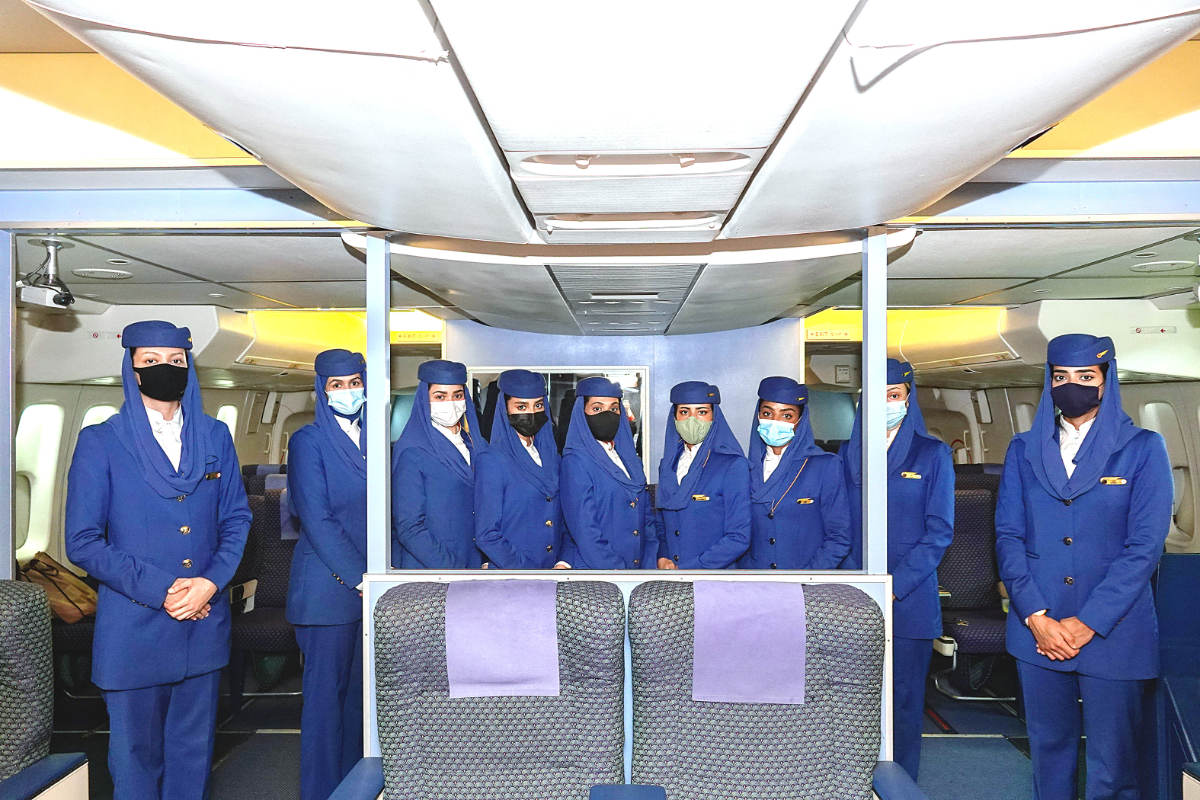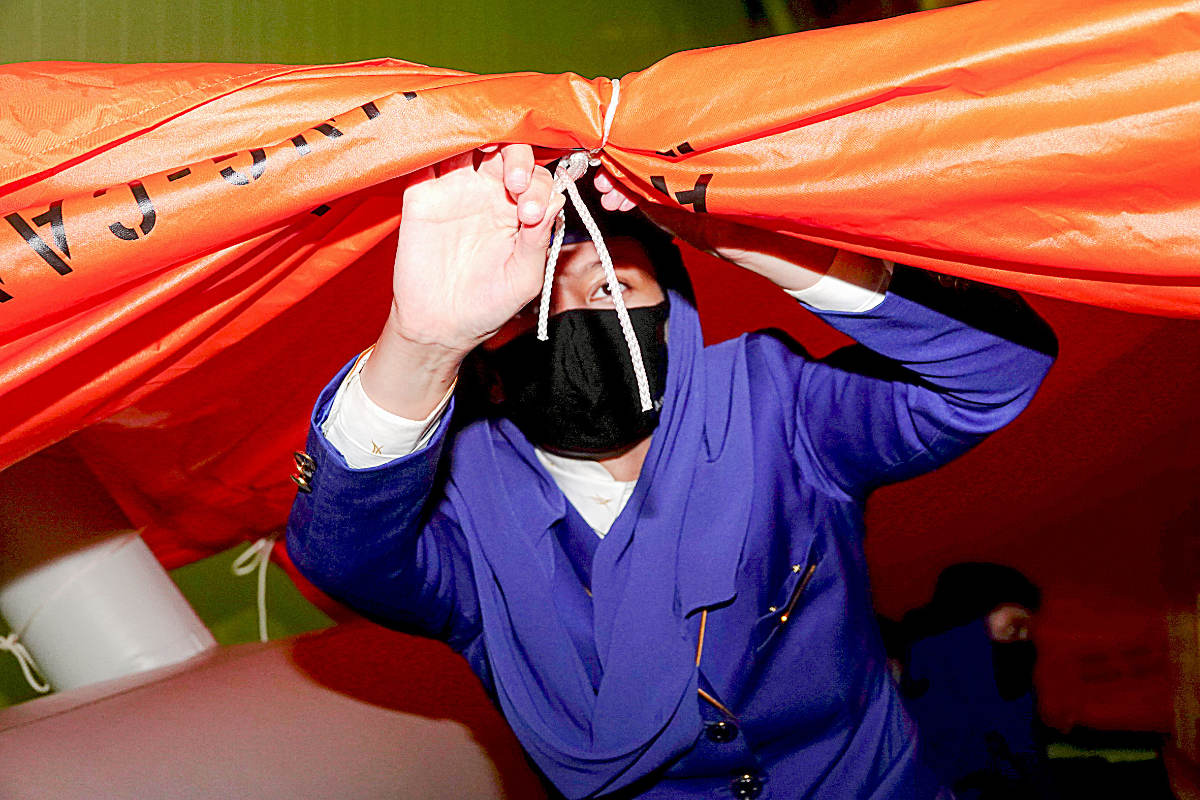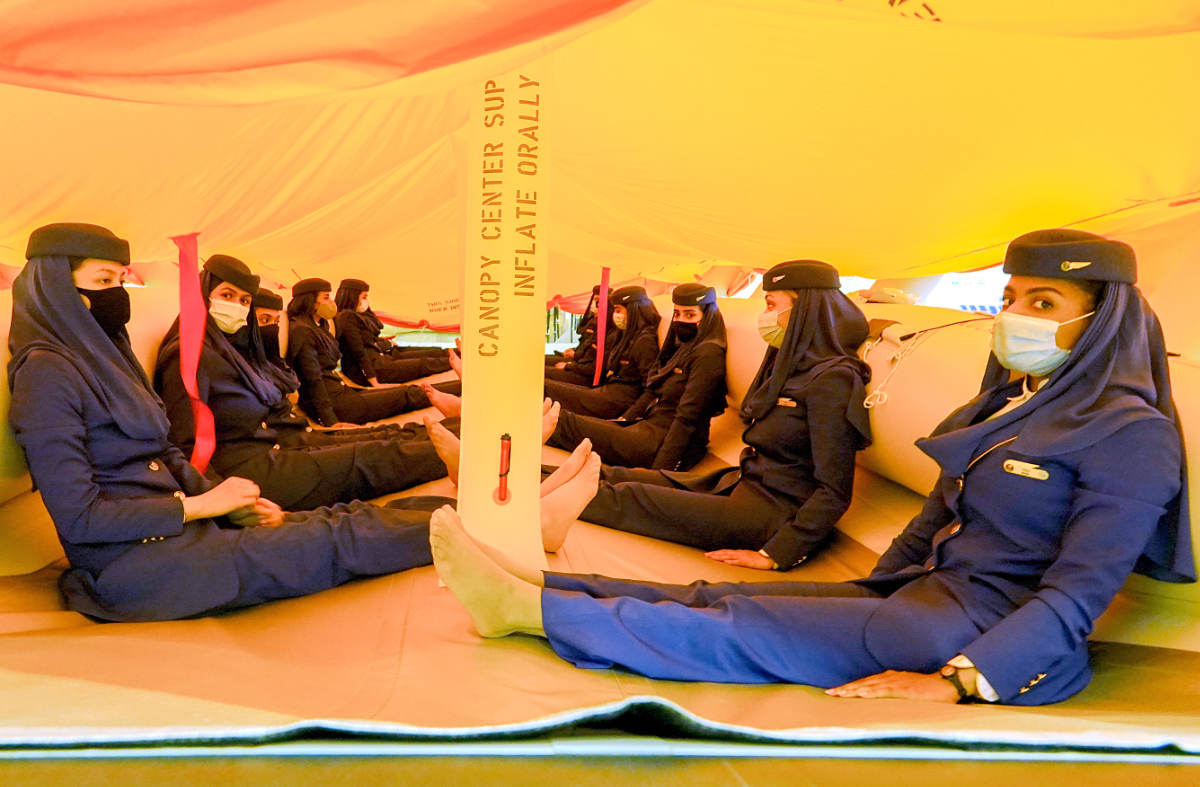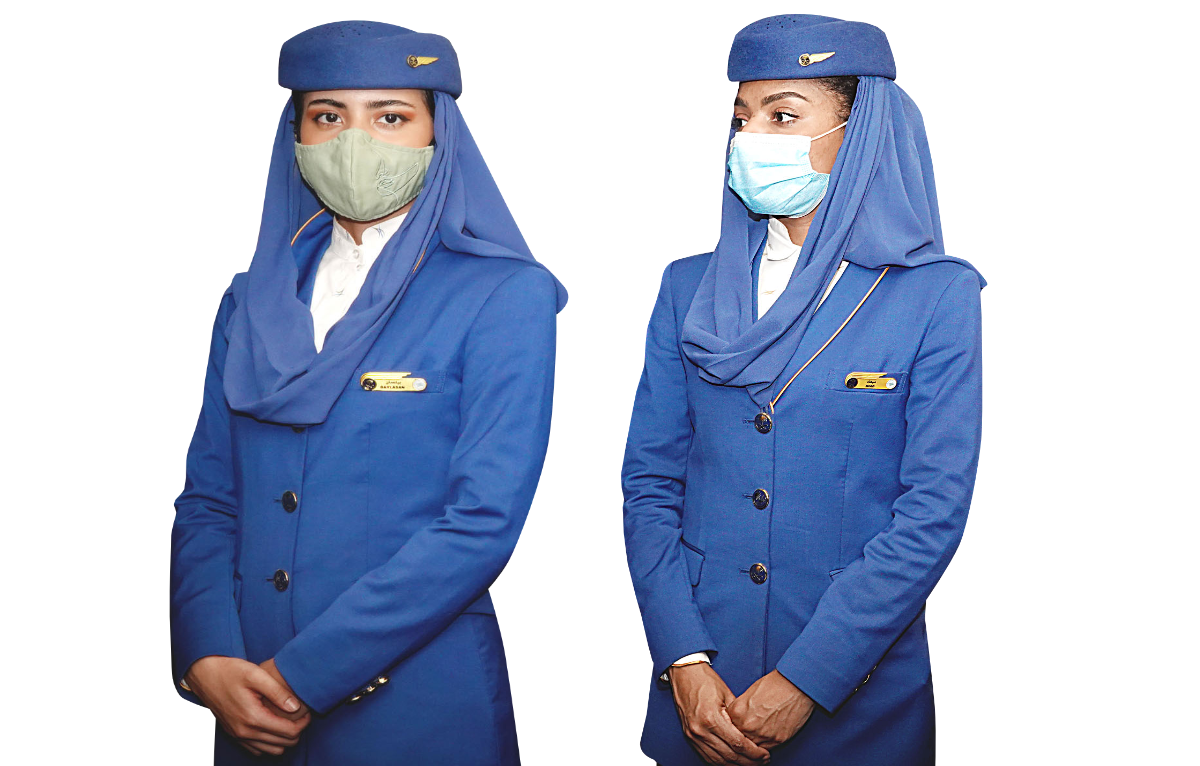JEDDAH: Aviation continues to be one of the many sectors that is offering job opportunities for Saudi women as they are already working in air control, operational and administrative roles and as flight attendants.
Saudi Airlines’ official college, Prince Sultan Aviation Academy, in Jeddah, started training Saudi female flight attendants two years ago as part of a nationwide effort to localize jobs and empower women.
Since the classes began, 37 Saudi female flight attendants graduated and are currently working alongside male colleagues on domestic and international flights. Women have always worked as flight attendants but the job was previously restricted to women of other nationalities.
Students undergo two months of intensive training programs tailored to specific requirements, including customer service, pre-flight procedures, boarding, in-flight service, safety and security procedures, and first aid.
Bailasan Ahmad, a Saudi female flight attendant trainee currently doing her safety training at the academy, said that her journey to become a flight attendant has been a pleasant one.
“I was expecting this job to be more about service and hospitality,” she told Arab News. “But during the training, I learned about safety and how to deal with different pressing situations, such as medical emergencies and fires.”
I was so surprised about the results that we gained from Saudi women. They surprised us with their knowledge and performance. I believe that no one will be more perfect to represent the Saudia airline’s culture and hospitality than the Saudi women.
Hattan Al-Sharif
Ahmad said she traveled frequently during her childhood and was always impressed with the flight attendants she met along the way.
“I talked with them and learned about their job and learned they do have a lot of responsibilities,” she said. “But taking the training for myself was a different experience than I expected.”
FASTFACTS
• Prince Sultan Aviation Academy in Jeddah started training Saudi female flight attendants two years ago as part of a nationwide effort to localize jobs.
• Women have always worked as flight attendants but the job was previously restricted to women of other nationalities.
• Among diversifying the Kingdom’s economy away from oil, Saudi Vision 2030 aims to increase the percentage of women in the nation’s workforce to 30 percent.
Ahmad is thankful for the opportunity and proud to introduce herself as a Saudi representing the national carrier Saudi Airlines.
The qualifications for Saudi women who wish to apply for a job with the Kingdom’s flag carrier must be under 30 years old, have a high school degree, and be fluent in English. There are also other specific conditions related to general appearance and personal attitude.
Mee’ad Al-Baraka, another Saudi flight-attendant-to-be, expressed her eagerness for the opportunity: “I want to show the world that Saudi women are capable of doing such a job. What I like the most about this job is representing my country.”
Al-Baraka said she also likes the feeling of responsibility towards the guests, providing them with the best hospitality and the fact that her job allows her to explore the world.
Saudi female trainees showed an exceptional performance during their professional training with a 100 percent success rate, an official at the academy said.
Hattan Al-Sharif has worked with Saudi Airlines since 2002. He has been a flight attendant instructor and taught in-flight service for the past three years.
“I am so proud to be chosen as one of those instructors training Saudi women and to be part of this huge change happening in the whole Kingdom,” Al-Sharif told Arab News.
He said Saudi female applicants tend to be highly educated and showed genuine eagerness for the job.
“I was so surprised about the results that we gained from Saudi women,” he said. “They surprised us with their knowledge and performance. I believe that no one will be more perfect to represent the Saudi Airlines’ culture and hospitality than the Saudi women.”
Alaa Allaf, who is also doing her flight attendant training at the academy, explained that many people still lack a clear understanding of a flight attendant’s crucial responsibilities.
“There are many misconceptions about the job,” she told Arab News.
“Some people think that flight attendants cook food, but we actually do not do any cooking. Our main responsibilities are related to safety and security, and ensuring that everything is in the right place and position in the cabin. We also make sure that everyone is safe before and during the flight. That includes guests and the cabin crew members.”
Allaf said she wanted to become a flight attendant in 2016, which was before Saudi women were recruited for the job.
“I am grateful for the enormous changes taking place in the Kingdom, offering Saudi women endless opportunities. I am certain that we will prove our excellence and competence in every field,” she said.
Saudi Arabia’s General Authority of Civil Aviation announced earlier this year a plan to localize 10,000 air transport jobs in 28 specialized professions across the sector by 2023, including flight attendants jobs.
This plan is a product of the authority’s cooperation with the Ministry of Human Resources and Social Development to enhance the aviation sector further. Both parties want to reduce the unemployment rate in the Kingdom to 7 percent, as per the objectives of the Vision 2030’s reform plan.
Among diversifying the Kingdom’s economy away from oil, Saudi Vision 2030 aims to increase the percentage of women in the nation’s workforce to 30 percent.






































